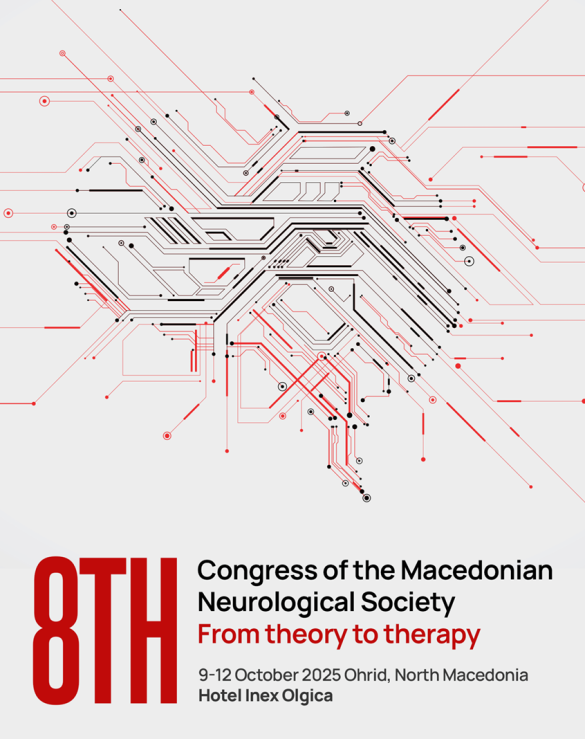by Jan Dörr and Ilka Kleffner
We here present a 26-year-old woman who referred herself to our neuroimmunological outpatient department after recurrent episodes of encephalopathy, visual dysfunction, and hearing loss. The presentation of this case was first published in Nature Reviews Neurology 2009 5(12):683-8, Nature Publishing Group, a division of Macmillan Publishers Ltd.
In 2006, at the age of 20 this previously healthy female subacutely developed substantial neuropsychological deficits, mainly involving executive functions, a mild left arm paresis, gait ataxia, and an incomplete sensory spinal cord syndrome at the level of T4. MRI revealed multiple periventricular, thalamic, and cerebellar T2 hyperintense lesions (figure 1A). CSF showed a mild pleocytosis (22/µl) and a moderate protein elevation. Acute demyelinating encephalomyelitis was suspected, and following standard high dose intravenous treatment with methylprednisolone, the patient recovered completely. A few months later, the patient developed acute bilateral hypoacusis mainly of low frequencies which was diagnosed as peripheral otogenic dysfunction by an ENT specialist and successfully treated with prednisolone. Two years later she noticed painless vision disturbances on both eyes which could be attributed to bilateral scotoma due to branch retinal artery occlusions (BRAO) and choroideal infarction (figure 2). A retinal vasculitis was suspected by the ophthalmologists and after another course of high dose intravenous methylprednisolone, the visual field defects partially resolved. Remarkably, the relationship between these three episodes was obviously disregarded by the physicians involved.
When we first saw the patient, the neurological and psychological status was normal, extensive laboratory workup was neither suggestive for a vasculitic, paraneoplastic, or granulomatous process, nor for an infectious condition or a coagulopathy (for details of laboratory workup please refer to the published case report). CSF studies were also normal; in particular, oligoclonal bands were not detectable. Imaging studies showed small T2-hyperintense lesions within the corpus callosum and global and callosal atrophy (figure 1B). Further neurological workup was less instructive. Based on the typical clinical trial, the MRI pathology, and the differential diagnostic workup we established the diagnosis of Susac’s syndrome and started immunosuppressive treatment with azathioprine and prednisolone in addition to acetylsalicylic acid to inhibit thrombocyte function. After a further relapse in 2009with a new BRAO in the right eye and progressive hearing loss in the left ear, the patient’s treatment was switched to mycophenolate mofetil, IVIG, and prednisolone after a high dose intravenous methylprednisolone pulse. The new symptoms resolved completely. Prednisolone was tapered down over six months; mycophenolate mofetil was stopped in 2011. Today, the patient is treated with subcutaneous immunoglobulins. Follow-up MRIs do not show any changes, and the clinical findings are stable (little gait ataxia and bilateral scotoma). The patient has finished her studies.
Comment by the authors
CNS dysfunction, hearing loss, and visual dysfunction attributable to branch retinal artery occlusions are the clinical hallmarks of Susac’s syndrome which was first described in 1979 by John O. Susac. The pathogenesis is still unclear; autoimmune processes that lead to an occlusion of small vessels in the brain, retina, and inner ear are believed to play a crucial role. The diagnosis, which is mainly based on clinical pattern, evidence of retinal artery occlusion and fluorescein leakage in retinal angiography, and MRI pathology with characteristic round lesions within the corpus callosum, may be straightforward when the characteristic clinical trial is complete and the physician is familiar with the clinical presentation. However, the often sequential occurrence of symptoms with symptom-free intervals in between on the one hand and the involvement of multiple medical disciplines on the other often enough result in a delayed or even completely missed diagnosis. In fact, Susac’s syndrome needs to be considered as differential diagnosis in various neurologic, psychiatric, ophthalmologic, and ENT conditions. Particularly, differentiation from multiple sclerosis or, as in our case acute demyelinating encephalomyelopathy is often challenging since both clinical presentation and diagnostic findings may overlap. Thus, although certainly rare, a high number of unrecognized cases probably exist. Yet, an early diagnosis is important as the prognosis vastly depends on timely and appropriate immunosuppressive treatment. Unfortunately, treatment approaches are based on hypothetical considerations and anecdotal reports, as no controlled studies or clinical trials have yet been performed.
We chose this case for presentation in the Grand Round section of Neuropenews as it reflects a typical disease course on the one hand and illustrates the challenge to establish the diagnosis on the other.
Jan Dörr is working at the NeuroCure Clinical Research Centre, Charité-Universitätsmedizin Berlin, Germany.
Ilka Kleffner is working at the Department of Neurology, University of Münster, Germany.










